Disclosure: This article contains affiliate links. We may earn a commission from purchases at no extra cost to you, which helps our travel content.
When most travelers think of Palau, they envision crystal-clear waters, world-class diving, and the iconic Jellyfish Lake. But after my third visit to this Pacific paradise, I've discovered there's a whole world beyond the blue that few visitors ever experience. Airai, Palau's largest state located on Babeldaob Island, offers an untamed counterpoint to the underwater wonders that made this nation famous. As someone who first fell in love with travel through the savannas of Kenya, finding Airai's lush jungles and rich cultural heritage felt like discovering a secret chapter in an already beautiful book. This spring, my daughter Amara and I spent two unforgettable weeks trekking through ancient forests, connecting with local communities, and experiencing traditions that have survived centuries of outside influence. What follows is our journey beyond the expected, into the heart of what makes Palau truly special.
Getting to Know Airai: Where Jungle Meets History
After three visits to Palau focused almost exclusively on diving, I realized I'd been missing half the story. Airai, just a 20-minute drive from Koror (the main tourist hub), feels worlds away from the dive shops and seafood restaurants.
The state covers much of the southern portion of Babeldaob, Palau's largest island, and is home to some of the nation's most significant archaeological sites. What struck me immediately was how few tourists we encountered once we left the main road. While thousands flock to Palau's marine sanctuaries, the jungle paths of Airai remain refreshingly uncrowded.
Our adventure began at the Airai Bay Mangrove Conservation Area, where we hired a local guide named Techereng. A former software developer who returned home to help preserve his ancestral lands, Techereng reminded me of my own journey from tech burnout to finding purpose through travel and cultural connection.
'Most visitors see only what's in the brochures,' he told us as we paddled traditional outrigger canoes through the mangrove channels. 'But Palau's story is written in these forests as much as in our reefs.'
The mangroves serve as natural filters for the coral reefs and provide crucial habitat for juvenile fish. But they're also cultural spaces where traditional fishing practices have been maintained for generations. As we navigated the narrow waterways, I couldn't help but think about how interconnected everything is here—the land, sea, and people existing in a delicate balance that modern tourism both celebrates and threatens.

💡 Pro Tips
- Hire a local guide for mangrove tours—they know hidden channels and can explain the ecosystem's importance
- Visit the Airai State Office first to get information on permits needed for certain historical sites
- Bring cash as credit cards aren't widely accepted outside of major hotels
Trekking the Jungle: Airai's Hidden Waterfalls and Ancient Paths
Day three marked our first serious jungle trek, and I was grateful for my hiking boots which provided crucial ankle support on the uneven terrain. The trail to Tabecheding Waterfall isn't on most tourist maps, and that's precisely why it's special.
The 4-hour trek through primary rainforest took us past massive banyan trees whose aerial roots created natural sculptures that Amara said looked like 'nature's art installation.' The humidity was intense—within minutes we were drenched in sweat despite starting early. My quick-dry hiking shirt proved its worth here, wicking moisture while providing sun and bug protection.
Our guide, Dilubech, pointed out medicinal plants along the way, including leaves his grandmother still uses to treat fever and inflammation. When I mentioned my background in e-commerce, he laughed and said, 'Some things can't be ordered online or scaled up for mass production. These plants only grow here, and only work when harvested with respect.'
The trail grew steeper as we approached the falls, with sections requiring us to use fixed ropes to navigate muddy inclines. The effort was worth it—Tabecheding revealed itself as a 60-foot cascade emptying into a pristine pool surrounded by ferns and orchids. We spent two hours swimming and enjoying a packed lunch while Dilubech shared stories of the spirit guardians believed to protect these waters.
What makes these treks special isn't just the destinations but the journey itself. The jungle here feels ancient and alive in ways I haven't experienced since my transformative trip to Kenya years ago. There's a primordial quality to Airai's forests—they've remained largely unchanged for centuries, and walking through them feels like stepping back in time.
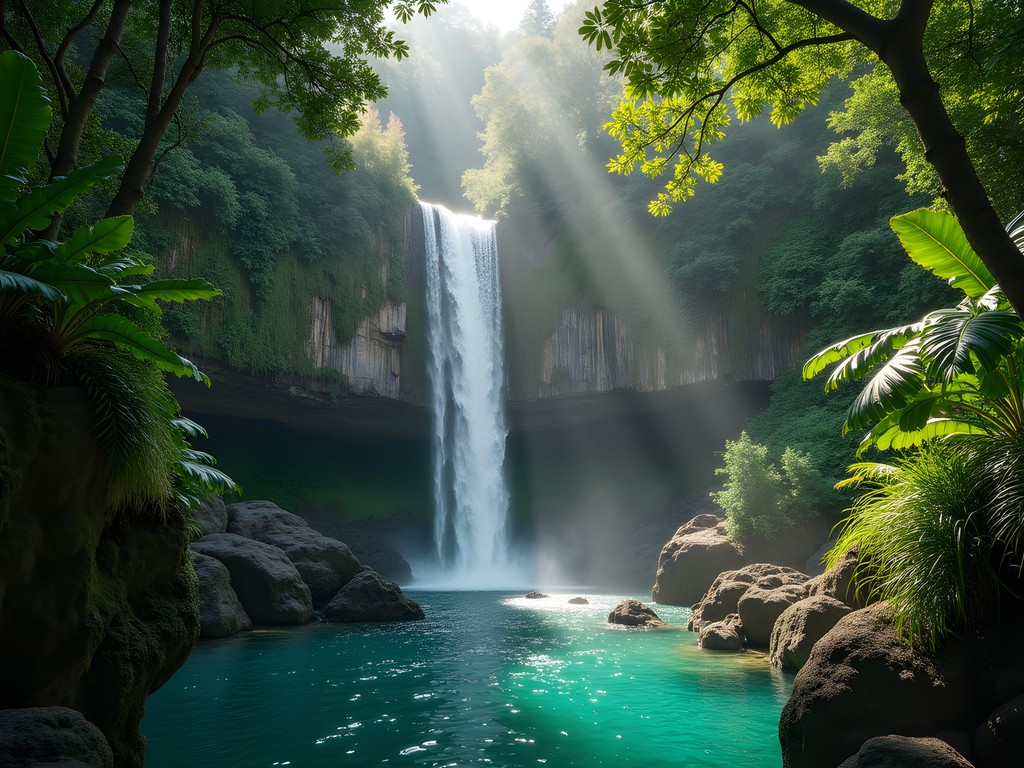
💡 Pro Tips
- Pack at least 3 liters of water per person for full-day treks
- Apply reef-safe, DEET-free insect repellent regularly
- Bring a dry bag for electronics—sudden rain showers are common year-round
Cultural Immersion: Living With the Airai Community
The highlight of our two weeks came midway through our stay when we participated in a three-day homestay with a family in Airai's Ngetkib village. This wasn't arranged through a hotel tour desk but through connections our guide Techereng helped establish.
Our host family—three generations living under one roof—welcomed us with a traditional feast featuring taro, fresh fish wrapped in banana leaves, and fruit bat soup (yes, I tried it; no, Amara wouldn't touch it). What struck me most was how technology and tradition coexisted here. Our host's teenage son was as adept at climbing betelnut trees as he was at troubleshooting the village's satellite internet connection.
Each morning, we joined the grandmother to collect medicinal plants and learn about their uses—knowledge that's been passed down for generations but is increasingly at risk as younger Palauans move to urban areas or abroad. When I mentioned my interest in startup ecosystems, our host explained that several young villagers were developing apps to document traditional knowledge before it's lost.
'Our challenge,' he told me while showing us how to weave palm fronds into baskets, 'is finding ways to honor our past while creating economic opportunities that don't require leaving home.'
We participated in daily village life—fishing using traditional methods, helping prepare meals in the community cookhouse, and joining evening storytelling sessions where myths and legends were shared. One night, we were invited to witness a coming-of-age ceremony that few outsiders ever see. The intricate dances and chants performed under a full moon created a connection to place and people that no resort experience could match.
What makes these cultural experiences in Airai special is their authenticity. Unlike staged cultural shows at hotels, these are real communities sharing their actual lives and traditions. The experience reminded me why I travel with my daughter—to show her that education happens everywhere, especially in conversations with people whose worldview differs from our own.
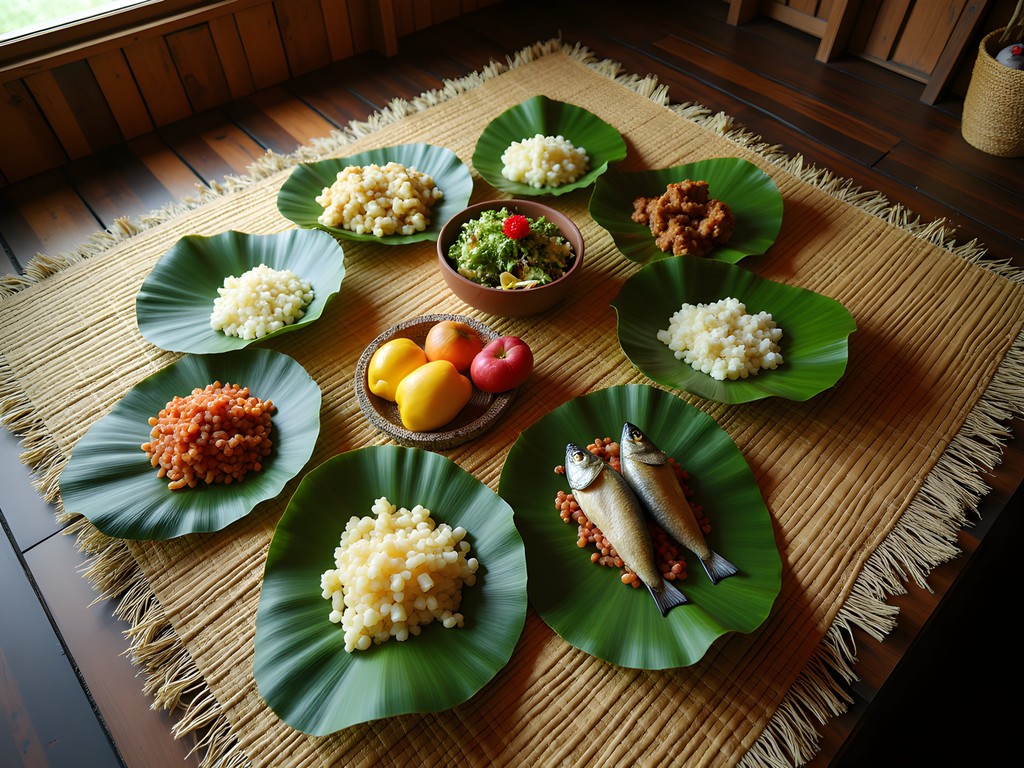
💡 Pro Tips
- Bring small, thoughtful gifts for your host family (school supplies are always appreciated)
- Learn a few basic Palauan phrases—even simple greetings go a long way
- Ask before taking photos, especially during ceremonies
Ancient Stone Monoliths: Badrulchau and Beyond
No trip to Airai would be complete without exploring its archaeological treasures, and Badrulchau Stone Monoliths site was at the top of our list. Located in northern Babeldaob, it's about an hour's drive from Airai village on roads that range from recently paved to seriously challenging.
Our rugged daypack proved essential for carrying water, snacks, and rain gear as we explored these ancient structures. Dating back approximately 2,000 years, these massive basalt columns are arranged in neat rows and are believed to have supported a massive traditional meeting house or bai. Some columns weigh over five tons, and their presence raises fascinating questions about how ancient Palauans moved and positioned them without modern technology.
What makes this site special isn't just its age but how it connects to living traditions. Our guide explained that many modern bai houses still follow architectural principles established millennia ago, with contemporary builders referencing these ancient sites for inspiration.
Less visited but equally fascinating are the stone faces and monoliths scattered throughout Airai itself. These aren't concentrated in a single archaeological park but integrated into the living landscape. We spent an afternoon with a village elder who showed us stone platforms hidden behind modern homes, ancient terraces now growing taro, and paths lined with stones that have guided travelers for centuries.
'Our ancestors didn't build monuments to be admired from a distance,' he explained. 'They built useful structures that we still interact with today.'
This living relationship with archaeological heritage is something I rarely encounter in my travels. In many destinations, ancient sites are cordoned off, separated from daily life. In Airai, the past isn't segregated from the present but woven into it, creating a cultural continuity that spans thousands of years.
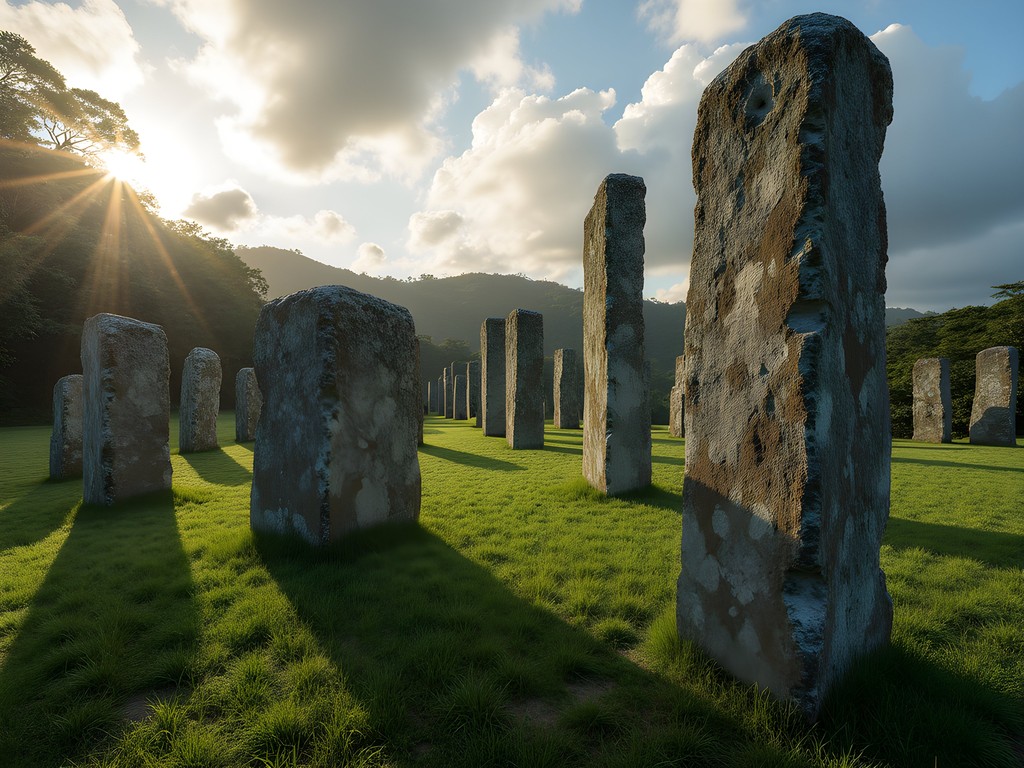
💡 Pro Tips
- Visit Badrulchau early morning or late afternoon to avoid midday heat
- Hire a knowledgeable guide who can explain the cultural significance beyond the physical structures
- Bring a good camera with wide-angle lens to capture the scale of the monoliths
Responsible Adventure: Conservation Challenges in Airai
Our final days in Airai coincided with a community conservation initiative to restore mangrove areas damaged by recent development. As we joined locals in planting mangrove seedlings, I was struck by the parallels between Palau's challenges and those I've witnessed in other developing destinations.
Palau faces a delicate balancing act—tourism brings crucial economic benefits but can threaten the very environments and cultures that make the country special. Nowhere is this more evident than in Airai, where development pressure from nearby Koror pushes against traditional land use.
'We need visitors,' explained Masao, a local conservation officer, 'but we need visitors who understand what makes this place special.'
The Palauan government has taken bold steps toward sustainable tourism, including the Palau Pledge that all visitors must sign upon entry, promising to act in an environmentally and culturally responsible manner. But on the ground in Airai, conservation remains a daily struggle between immediate economic needs and long-term sustainability.
We spent a morning with a community group that monitors water quality in Airai Bay, using a combination of traditional knowledge and modern water testing kit to track changes in the ecosystem. The data they collect helps inform local fishing practices and development decisions.
What impressed me most was how conservation here isn't treated as separate from daily life or economic activity. It's integrated into every discussion about the community's future. When I mentioned my background in e-commerce, several young conservation workers were eager to discuss how digital platforms might help them market sustainable products and experiences directly to conscious travelers.
As someone who's witnessed both the positive and negative impacts of tourism development across multiple continents, I found Airai's approach refreshingly holistic. Rather than creating artificial boundaries between conservation areas and development zones, they're working toward a model where every part of the landscape is managed with both use and protection in mind.
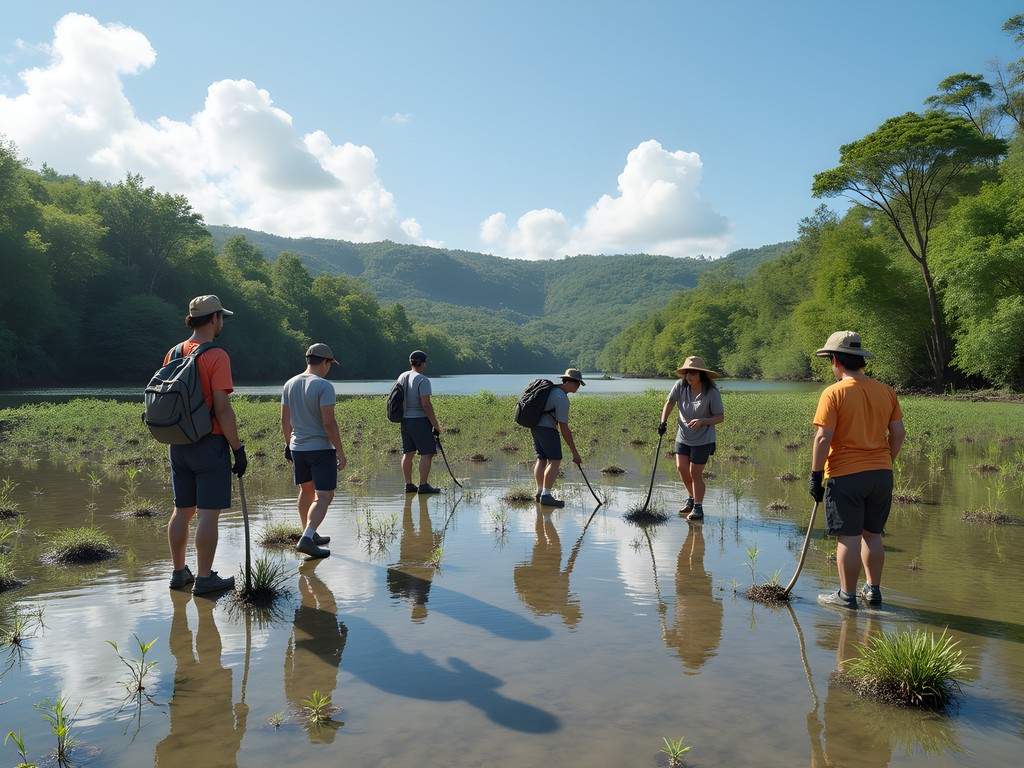
💡 Pro Tips
- Pack reef-safe sunscreen that won't harm coral when you inevitably go swimming
- Consider volunteering with local conservation groups—many welcome extra hands for a day
- Choose locally owned accommodations and guides to ensure your money supports the community
Final Thoughts
As our two weeks in Airai came to a close, I found myself reflecting on how this often-overlooked corner of Palau had changed my perspective on a country I thought I already knew well. Beyond the famous blue waters lies a world of green—of ancient forests, living traditions, and communities working to define sustainable paths forward. What makes Airai special isn't just its natural beauty or cultural heritage, but how these elements remain interconnected in ways that have been lost in many other destinations. For travelers willing to venture beyond the standard Palauan itinerary, Airai offers something increasingly rare: an authentic experience of place that engages all senses and leaves you feeling genuinely connected to both the land and its people. Whether you're trekking to hidden waterfalls, learning traditional crafts, or simply sharing stories over a home-cooked meal, Airai reminds us why we travel in the first place—not just to see new places, but to see the world through new eyes.
✨ Key Takeaways
- Airai offers a perfect counterpoint to Palau's famous marine attractions with authentic cultural experiences and jungle adventures
- Connecting with local communities through homestays provides insights impossible to gain from conventional tourism
- The archaeological sites throughout Airai reveal a sophisticated ancient civilization with living connections to modern practices
- Conservation initiatives welcome visitor participation and provide meaningful ways to give back to the destination
📋 Practical Information
Best Time to Visit
February-April (dry season with comfortable temperatures)
Budget Estimate
$150-250 per day including accommodation, guides, and meals
Recommended Duration
At least 5-7 days to explore properly, ideally as part of a 2-week Palau trip
Difficulty Level
Moderate To Challenging (Jungle Treks Require Reasonable Fitness)

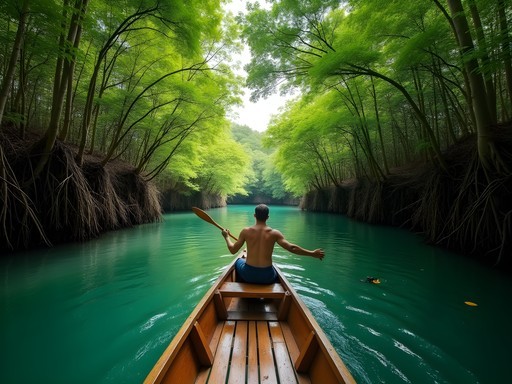

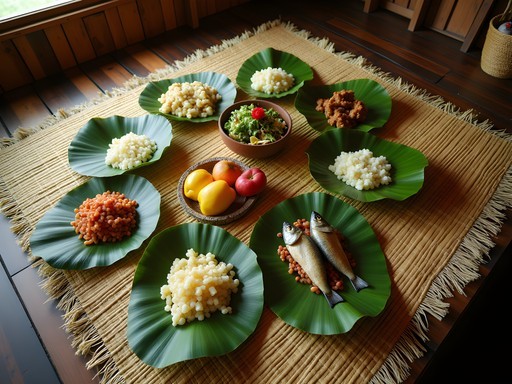

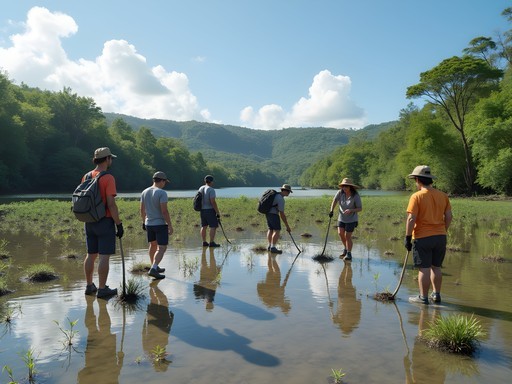










Comments
vacationwalker
Just booked my trip to Palau and adding Airai to the itinerary after reading this! Can't wait to explore beyond the usual spots!
escaperider
How many days would you recommend staying in Airai to see everything?
Riley Griffin
I'd say minimum 3 days, but 5 would be ideal to really experience the jungle treks, cultural activities, and ancient sites without rushing.
Casey Andersson
What a refreshing take on Palau! I've been telling travelers for years that there's so much beyond the Rock Islands (though they are spectacular). My last visit to Airai was during their harvest festival which was a complete cultural immersion. The elders performed traditional dances that aren't typically shown to tourists. Riley, did you notice how the jungle trails follow ancient pathways between villages? My guide pointed out stone markers that have guided travelers for centuries. The juxtaposition of ancient history with the vibrant living culture is what makes this area so special. For anyone planning a visit, the humidity is intense - lightweight, quick-dry clothing is essential. Looking forward to your next off-the-beaten-path discovery!
photoway
Those photos of the stone monoliths are incredible! What time of day did you visit to get that lighting?
Riley Griffin
Thanks! I went early morning, around 7am. The jungle mist was just lifting and created that magical light. Definitely worth the early wake-up call!
Robert Moreau
Riley, this brought back memories! I spent time in Airai back in 2019 and was equally captivated by how different it felt from the coastal areas. The jungle humidity is no joke though! I remember trekking to that hidden waterfall you mentioned - my guide shared ancient legends about spirits that supposedly dwell there. Did you try the traditional taro dishes during your homestay? The family I stayed with prepared this amazing taro leaf stew that I still dream about. For anyone heading there, I highly recommend bringing a good waterproof backpack - mine saved my camera during an unexpected downpour on the trail to Badrulchau. Palau's interior deserves much more attention than it gets!
journeystar
How difficult were the jungle treks? I'm not super fit but would love to see those waterfalls you mentioned!
Riley Griffin
There are treks for all levels! The main waterfall route is moderate - about 2 hours round trip with some uneven terrain. For something easier, the guided walks near the village are gorgeous and much gentler. Just bring good shoes and plenty of water!
wanderlustmaster4750
This is exactly why I love your blog, Riley! I visited Palau last year but stuck to the typical tourist spots. Now I'm kicking myself for missing Airai! The jungle trekking sounds incredible, and I'm fascinated by those ancient stone monoliths. Did you find the locals receptive to visitors participating in cultural activities? Planning a return trip next year and would love to experience this side of Palau.
Riley Griffin
The locals in Airai were incredibly welcoming! Just approach with respect and genuine interest. I'd recommend connecting with a community guide through your accommodation - they can arrange authentic cultural experiences that benefit the community directly.
wanderlustmaster4750
Thanks Riley! Will definitely look into that for my next trip.
beachguide
Wow, I had no idea Palau had so much to offer beyond diving! Those stone monoliths look incredible.
happyblogger
Love this alternative view of Palau! Did you feel safe during your homestay? Any language barriers?
Riley Griffin
Absolutely safe! Many Palauans speak excellent English, especially in the tourism sector. The family I stayed with was fluent, though knowing a few basic Palauan greetings was appreciated and led to some wonderful conversations about language.
coffeerider
Great post! How difficult were the jungle treks? Planning a trip with my wife who isn't much of a hiker but wants to see more than just beaches. Also, did you need special gear for the jungle humidity?
Riley Griffin
The main trails to the waterfalls are moderate - doable for anyone with basic fitness. For gear, quick-dry clothing is essential! I used my hiking sandals which were perfect for crossing streams and dealing with mud. Also bring twice as much water as you think you'll need - the humidity is no joke!
coffeerider
Thanks for the tips! Will definitely look into those sandals. Did you find English widely spoken in Airai or should we learn some basic Palauan phrases?
Amit Sullivan
Not Riley, but thought I'd chime in - learning a few Palauan greetings goes a long way in Airai! 'Alii' (hello) and 'Sulang' (thank you) were my most-used phrases. The locals really appreciate the effort even if your pronunciation is terrible (like mine was!).
Venture X
Premium card with 2X miles, $300 travel credit, Priority Pass